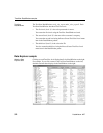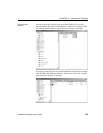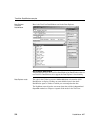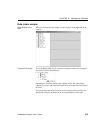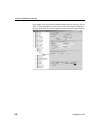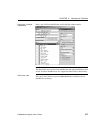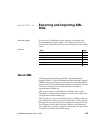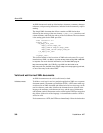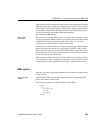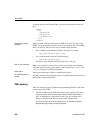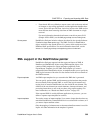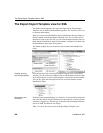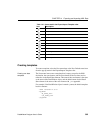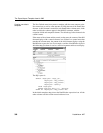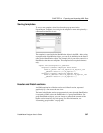
About XML
380 DataWindow .NET
An XML document is made up of declarations, elements, comments, character
references, and processing instructions, indicated in the document by explicit
markup.
The simple XML document that follows contains an XML declaration
followed by the start tag of the root element,
<d_dept_list>, nested row and
column elements, and finally the end tag of the root element. The root element
is the starting point for the XML processor.
<?xml version="1.0">
<d_dept_list>
<d_dept_list_row>
<dept_id>100</dept_id>
<dept_name>R &D</dept_name>
<dept_head_id>501</dept_head_id>
</d_dept_list_row>
...
</d_dept_list>
This section contains a brief overview of XML rules and syntax. For a good
introduction to XML, see
XML in 10 points at http://www.w3.org/XML/1999/XML-
in-10-points
. For more detailed information, see the W3C XML page at
http://www.w3.org/XML/
, the O’Reilly page XML from the inside out at
http://www.xml.com
, the XML Cover Pages at http://xml.coverpages.org/xml.html,
or one of the many books about XML.
Valid and well-formed XML documents
An XML document must be valid, well-formed, or both.
Valid documents
To define a set of tags for use in a particular application, XML uses a separate
document named a document type definition (DTD). A DTD states what tags
are allowed in an XML document and defines rules for how those tags can be
used in relation to each other. It defines the elements that are allowed in the
language, the attributes each element can have, and the type of information
each element can hold. Documents can be verified against a DTD to ensure that
they follow all the rules of the language. A document that satisfies a DTD is
said to be valid.
If a document uses a DTD, the DTD must immediately follow the declaration.



